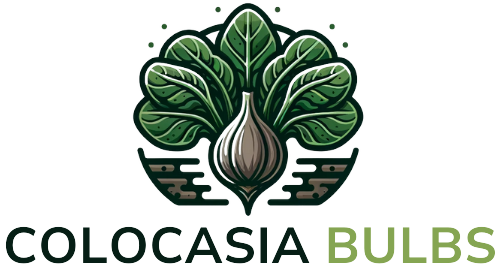Colocasia, commonly known as elephant ear, is a stunning tropical plant known for its large, heart-shaped leaves that resemble the ears of an elephant. These plants are a popular choice for gardeners looking to add a dramatic and lush appearance to their gardens. Understanding how Colocasia elephant ear bulbs reproduce can help gardeners propagate these plants more effectively. In this blog post, we'll delve into the reproduction process of Colocasia elephant ear bulbs, covering both sexual and asexual methods.
Overview of Colocasia Elephant Ear
Before diving into the reproduction process, it's important to have a basic understanding of the plant itself. Colocasia belongs to the Araceae family and is native to Southeast Asia. The plant thrives in warm, humid environments and prefers well-drained, moist soil. The large, striking leaves can grow up to three feet long, making them a focal point in any garden.
Methods of Reproduction
1. Sexual Reproduction
Sexual reproduction in Colocasia involves the production of seeds through the flowering process. While this method is less common in cultivation due to the plant's specific flowering requirements, it's still an important aspect of the plant's natural propagation.
Flowering and Pollination
Colocasia plants produce inflorescences, which are composed of a spathe (a large, petal-like bract) and a spadix (a spike with small flowers). The flowers on the spadix are divided into male and female sections.
- Pollination: In nature, pollination is often facilitated by insects. The male flowers release pollen, which is then transferred to the female flowers, resulting in fertilization.
- Seed Production: After successful pollination, the female flowers develop into berries containing seeds. These seeds can be collected and sown to produce new plants.
2. Asexual Reproduction
Asexual reproduction is the primary method for propagating Colocasia elephant ear plants. This method involves vegetative parts of the plant, particularly the bulbs and corms, ensuring the offspring are genetically identical to the parent plant.
Bulb and Corm Development
Colocasia plants produce underground storage organs known as corms. These corms store nutrients and energy, allowing the plant to survive adverse conditions and regrow.
- Corm Formation: As the plant matures, the primary corm (main bulb) develops smaller secondary corms (cormels) around it.
- Division: Gardeners can propagate Colocasia by dividing these corms. Here's how:
- Digging Up the Plant: Carefully dig up the Colocasia plant, taking care not to damage the corms.
- Separating the Corms: Identify the main corm and the smaller cormels. Using a sharp, sterile knife, separate the cormels from the main corm.
- Preparing for Planting: Allow the cut surfaces to dry for a day to prevent rot. Dusting the cuts with fungicide can help prevent infections.
- Planting the Corms: Plant the corms in well-draining soil, ensuring they are placed at the correct depth (typically about 4 inches deep). Water thoroughly after planting.
Rhizome Propagation
In addition to corms, some Colocasia varieties produce rhizomes – horizontal, underground stems that can also be used for propagation.
- Rhizome Identification: Look for rhizomes extending from the base of the plant.
- Separation and Planting: Similar to corm division, rhizomes can be cut and planted separately to grow new plants.
Tips for Successful Propagation
- Optimal Conditions: Ensure the soil is well-draining and rich in organic matter. Colocasia thrives in moist, but not waterlogged, conditions.
- Temperature: Colocasia prefers warm temperatures. If you live in a cooler climate, consider starting the corms indoors or in a greenhouse.
- Watering: Keep the soil consistently moist, especially during the initial stages of growth.
- Pest and Disease Control: Monitor for pests such as aphids and spider mites. Use appropriate treatments to keep the plants healthy.
- Regular Feeding: Fertilize the plants regularly with a balanced, water-soluble fertilizer to promote vigorous growth.
Conclusion
Understanding the reproduction process of Colocasia elephant ear bulbs can enhance your gardening efforts, allowing you to propagate these stunning plants successfully. Whether through seed production or asexual methods like corm division and rhizome propagation, you can enjoy a lush, tropical garden filled with the dramatic foliage of Colocasia. Happy gardening!


